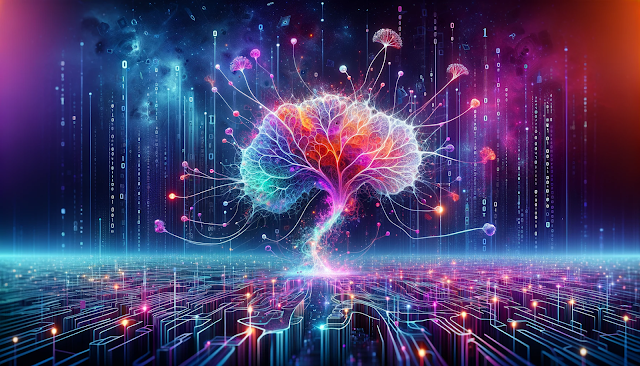- Get link
- X
- Other Apps
- Get link
- X
- Other Apps
Intellectual Property Rights: Unraveling the Areas Not Covered
Intellectual Property Rights (IPR) serve as the legal backbone protecting innovations, creations, and assets. However, it's crucial to understand the areas that remain outside the purview of conventional IPR.
Understanding Intellectual Property Rights (IPR)
Before delving into the uncovered areas, let's establish a foundation by understanding the fundamental principles and objectives of Intellectual Property Rights.
The Scope and Limitations of IPR
Patents and Discoveries
While patents protect inventions, they do not extend to cover scientific principles and discoveries.
Unprotected Ideas and Concepts
The realm of ideas and concepts, devoid of a tangible form, remains outside the protective umbrella of IPR.
Exclusions in Copyright Protection
Functional Aspects and Industrial Designs
Copyright law excludes protection for functional aspects and industrial designs, focusing on artistic expression.
Fair Use and Public Domain
Certain uses fall under fair use, and content in the public domain is exempt from copyright restrictions.
Trademarks: Beyond the IPR Umbrella
Generic and Descriptive Terms
Trademarks don't cover generic or purely descriptive terms that lack distinctiveness.
Geographical Indications
Protection may not extend to geographical indications that describe the origin of certain products.
Trade Secrets and Confidential Information
Limits of Legal Protection
While trade secrets offer protection, legal remedies may be limited when secrets are leaked or misappropriated.
Employee and Contractor Rights
The rights of employees and contractors regarding confidential information may not always align with formal IP protection.
( Also read our in-depth guide on Role of IPRs in Mobile App Development World )
Regulatory Gaps: Plant Varieties and Traditional Knowledge
Challenges in Plant Varieties Protection
Certain plant varieties may not receive adequate protection, posing challenges to agricultural innovation.
The Complexity of Traditional Knowledge
Traditional knowledge often exists in a regulatory grey area, lacking clear protection in intellectual property frameworks.
Digital Content and Database Rights
Digital Copy Protection
Protection mechanisms for digital content face challenges, leading to issues like piracy and unauthorized distribution.
Database Exclusivity
While databases enjoy exclusivity, the protection may not cover the data itself, posing challenges in the digital era.
Challenges in Enforcement and Global Variations
Jurisdictional Challenges
Enforcing IPR across jurisdictions is complex, leading to difficulties in combating global infringements.
Differences in International IP Laws
Variations in international IP laws create challenges for consistent and comprehensive protection globally.
The Role of Contractual Agreements
Importance of Licensing Agreements
Contractual agreements, especially licensing, play a pivotal role in filling gaps left by traditional IPR.
Contractual Safeguards for Uncovered Areas
Legal contracts become crucial in safeguarding interests in areas where conventional IP protection is lacking.
( Here is our in-depth guide on on IP and AI )
Balancing Innovation and Public Interest
Access to Essential Knowledge
Ensuring access to essential knowledge becomes crucial, striking a balance between innovation and public interest.
Encouraging Open Innovation
Promoting open innovation practices helps navigate uncovered areas, fostering collaboration and progress.
The Intersection of Technology and Unprotected Areas
AI-generated Creations
The emergence of AI-generated content raises questions about ownership and legal protection.
Open Source Software
The open-source community operates outside traditional IP boundaries, relying on collaborative frameworks.
Navigating the Grey Areas: Case Studies
Examining real-world case studies provides insights into the challenges and potential solutions in areas lacking conventional IP protection.
Expert Opinions on Uncovered Areas in IPR
Gaining insights from experts sheds light on the complexities and future considerations in areas outside the traditional IPR scope.
Conclusion
In conclusion, understanding the areas not covered by conventional Intellectual Property Rights is essential for navigating the complexities of innovation. While legal frameworks provide crucial protection, there are nuanced areas requiring attention and often necessitating tailored solutions.
Frequently Asked Questions
Can you patent a scientific discovery?
Patents generally cover inventions rather than scientific principles or discoveries.
What is fair use, and how does it impact copyright protection?
Fair use allows limited use of copyrighted material without permission for purposes like criticism, commentary, news reporting, teaching, and research.
How do trademarks differ from generic terms?
Trademarks protect distinctive terms, and generic terms lacking distinctiveness may not receive trademark protection.
What challenges do plant varieties face in terms of protection?
Plant varieties may encounter challenges as traditional intellectual property frameworks may not adequately protect them.
How does open-source software operate outside traditional IP boundaries?
Open-source software relies on collaborative frameworks, emphasizing community-driven development and sharing of code.
Location:
RGMC2975, 2975 Yazid Ibn Al Mulhab, 7227, Al Mathar Ash Shamali, Riyadh 12314, Saudi Arabia
- Get link
- X
- Other Apps



Comments
Post a Comment